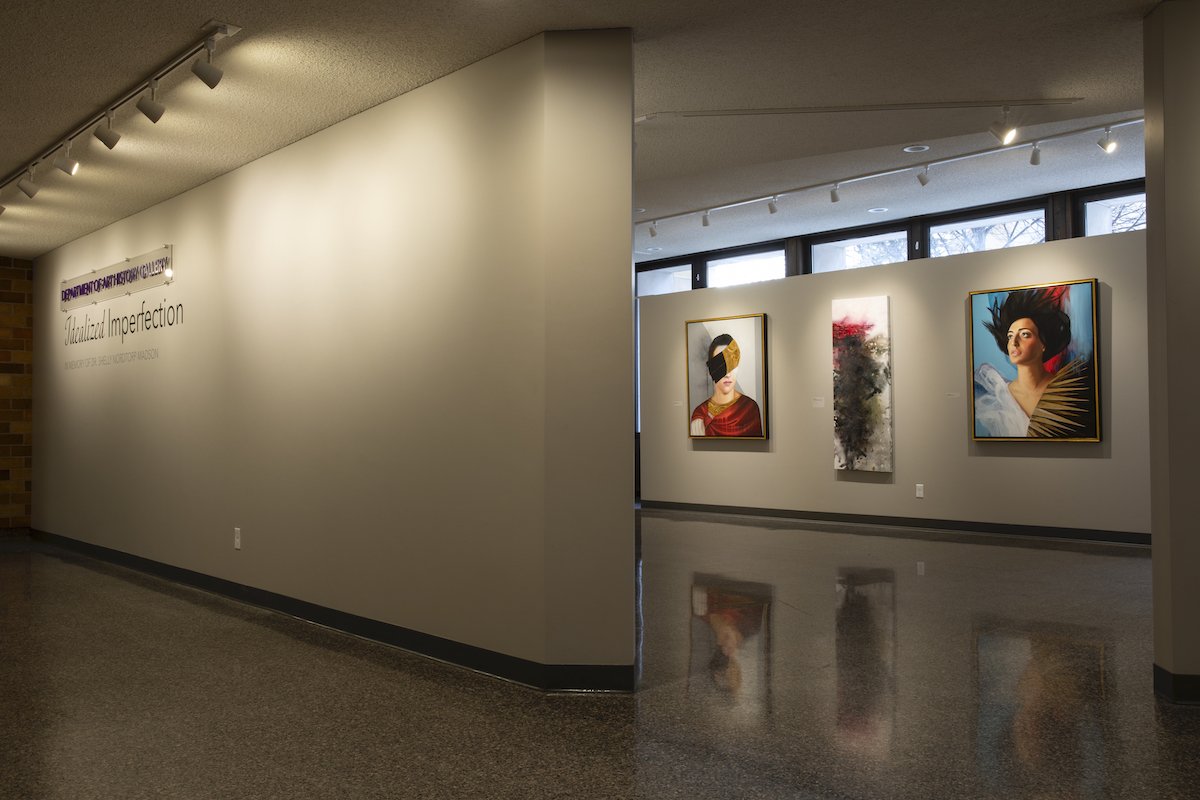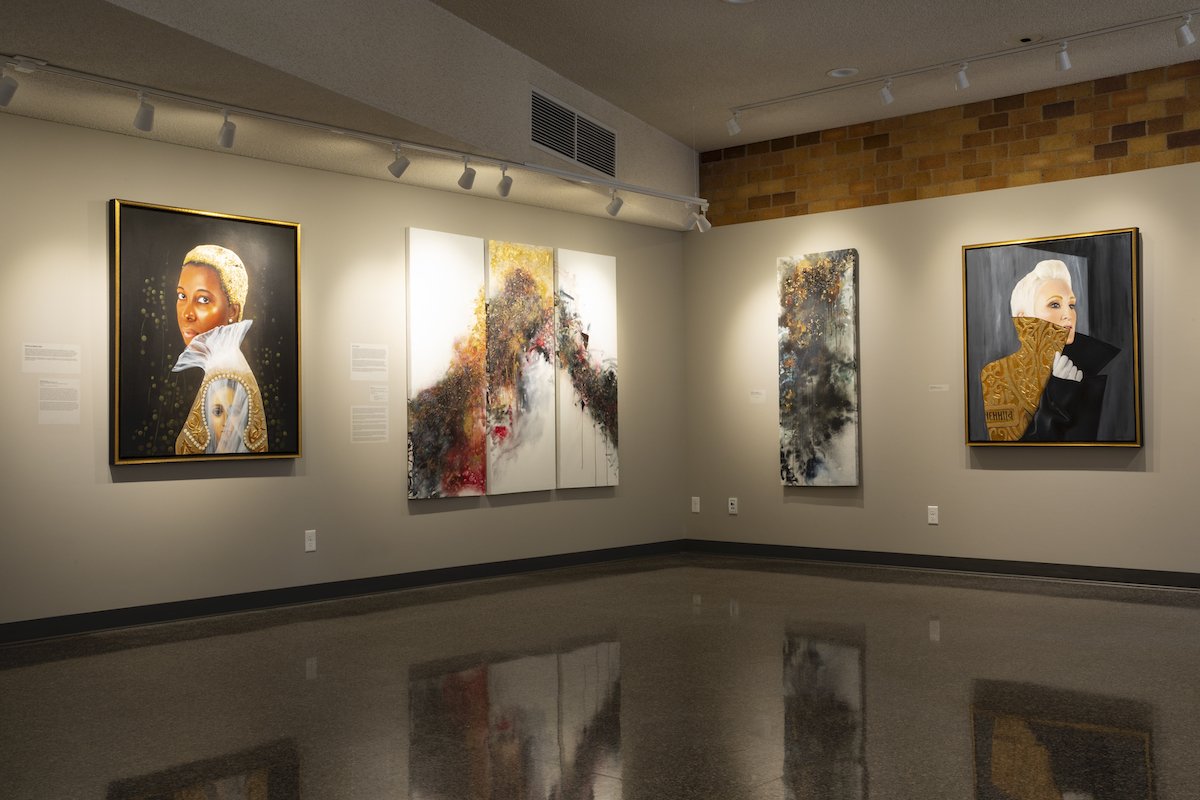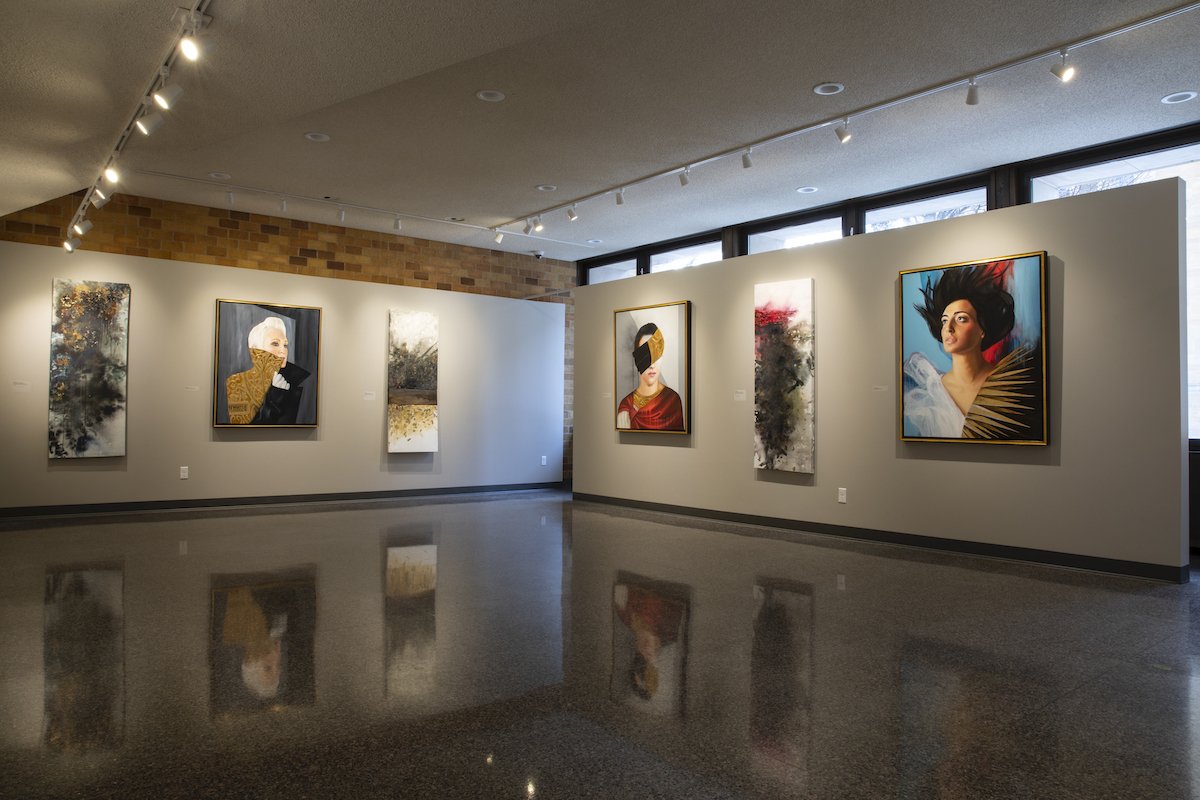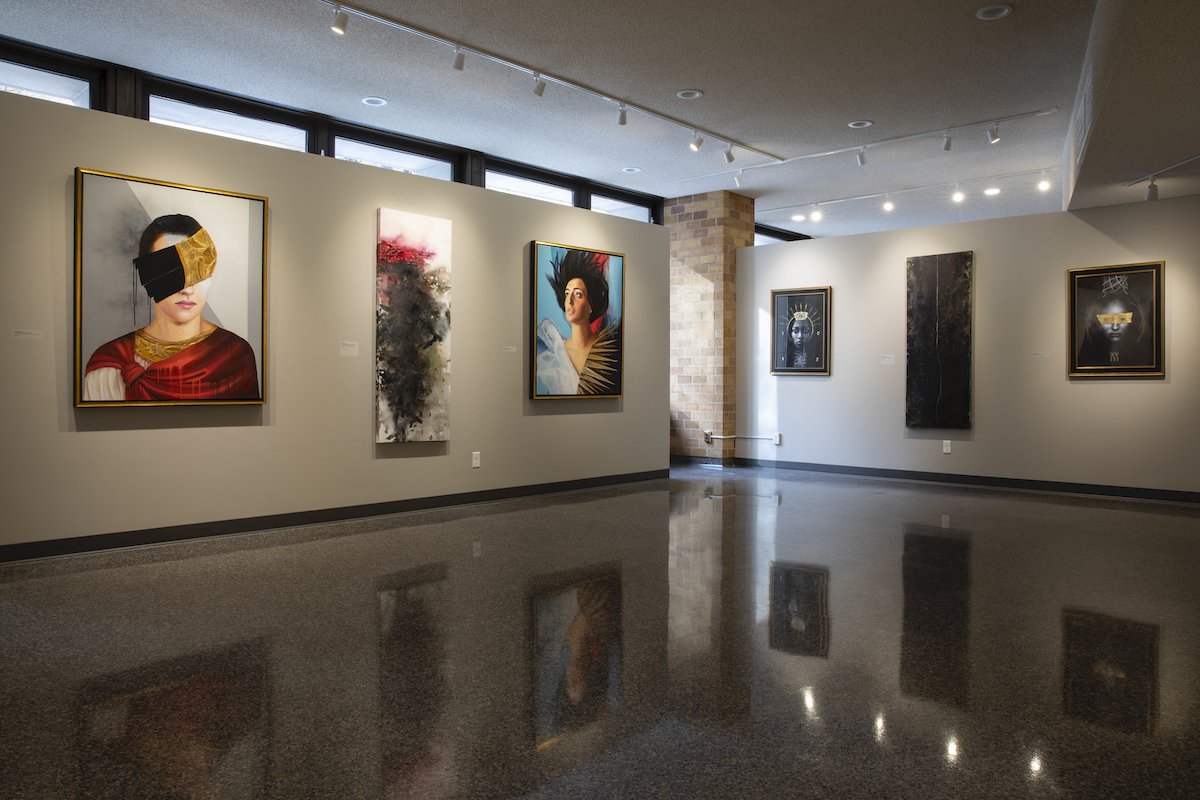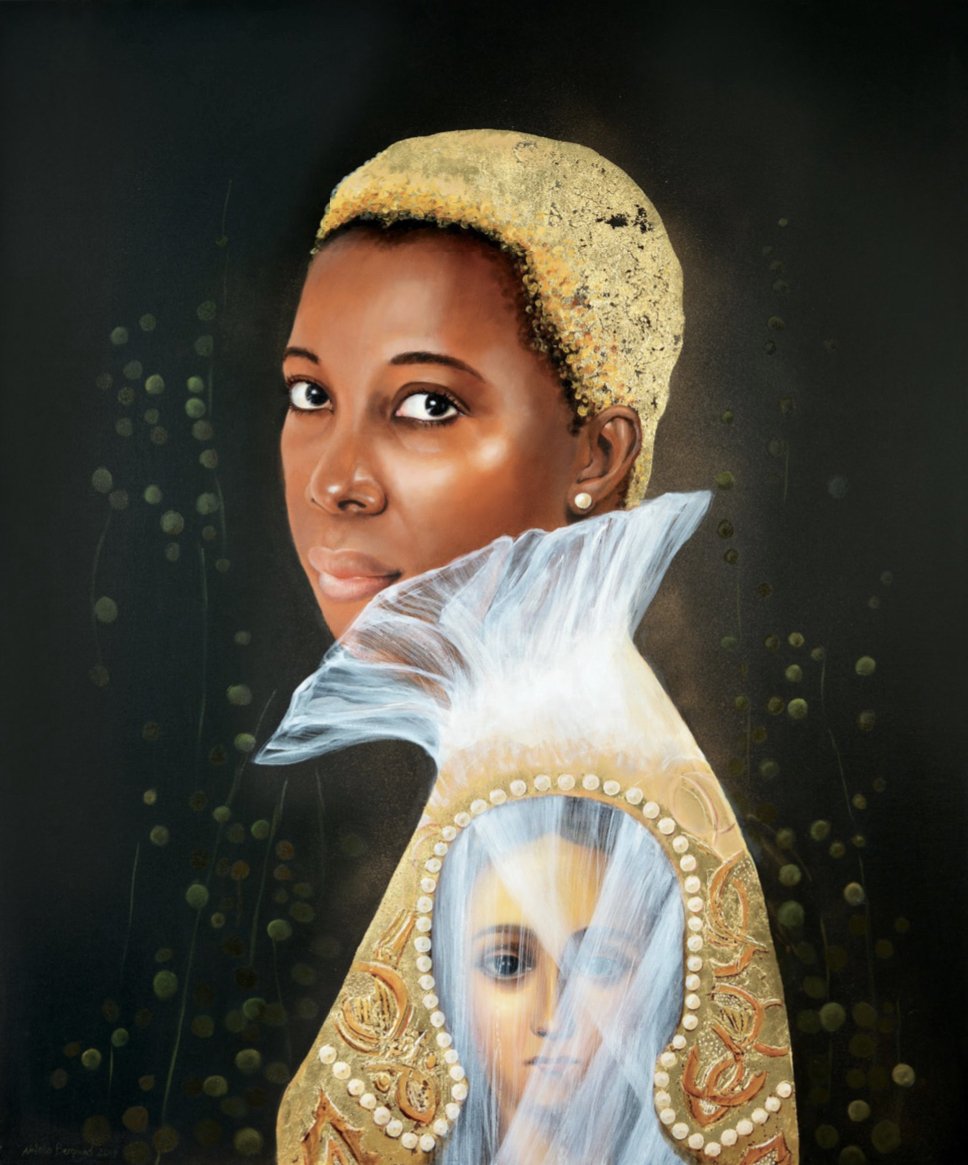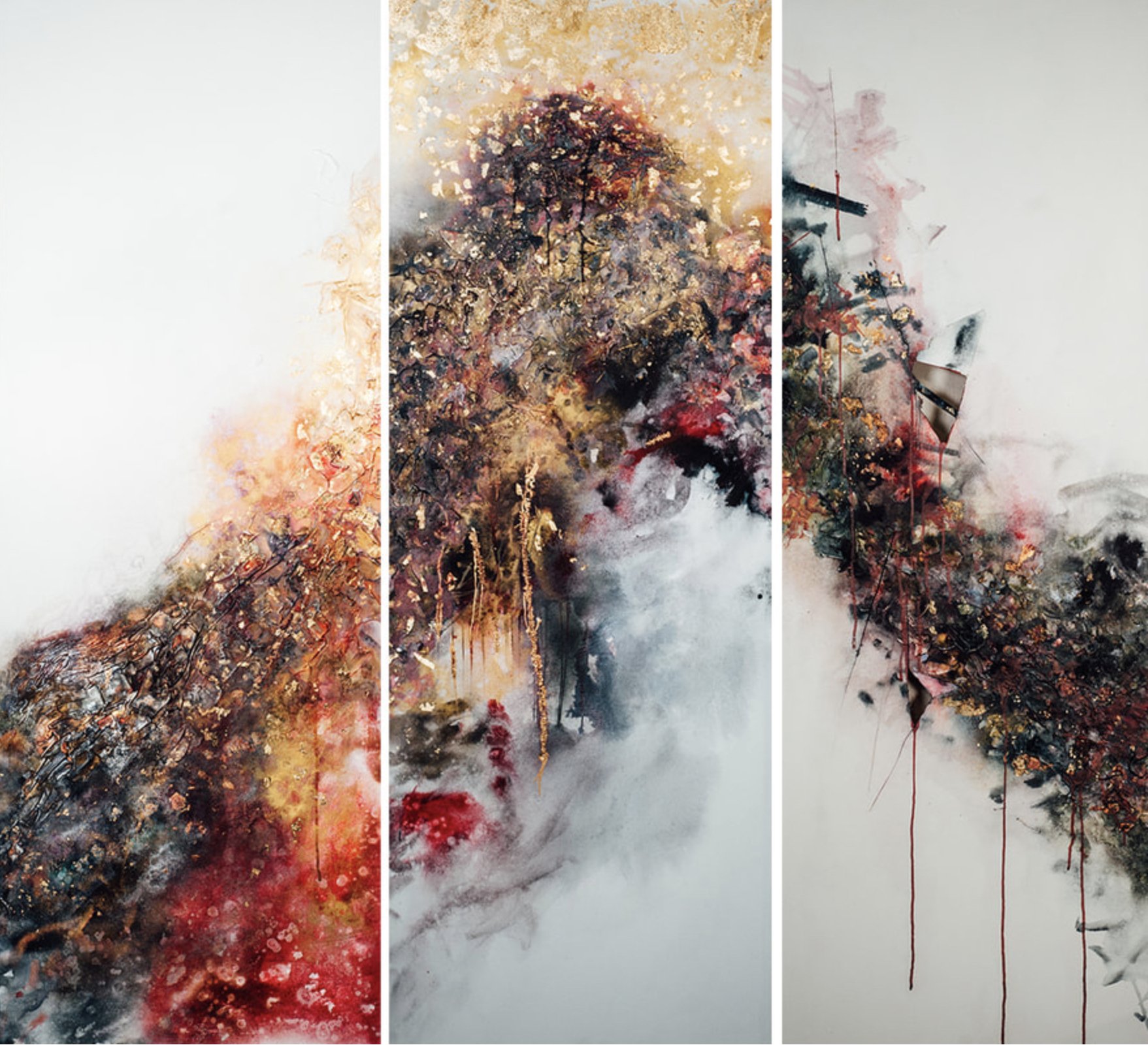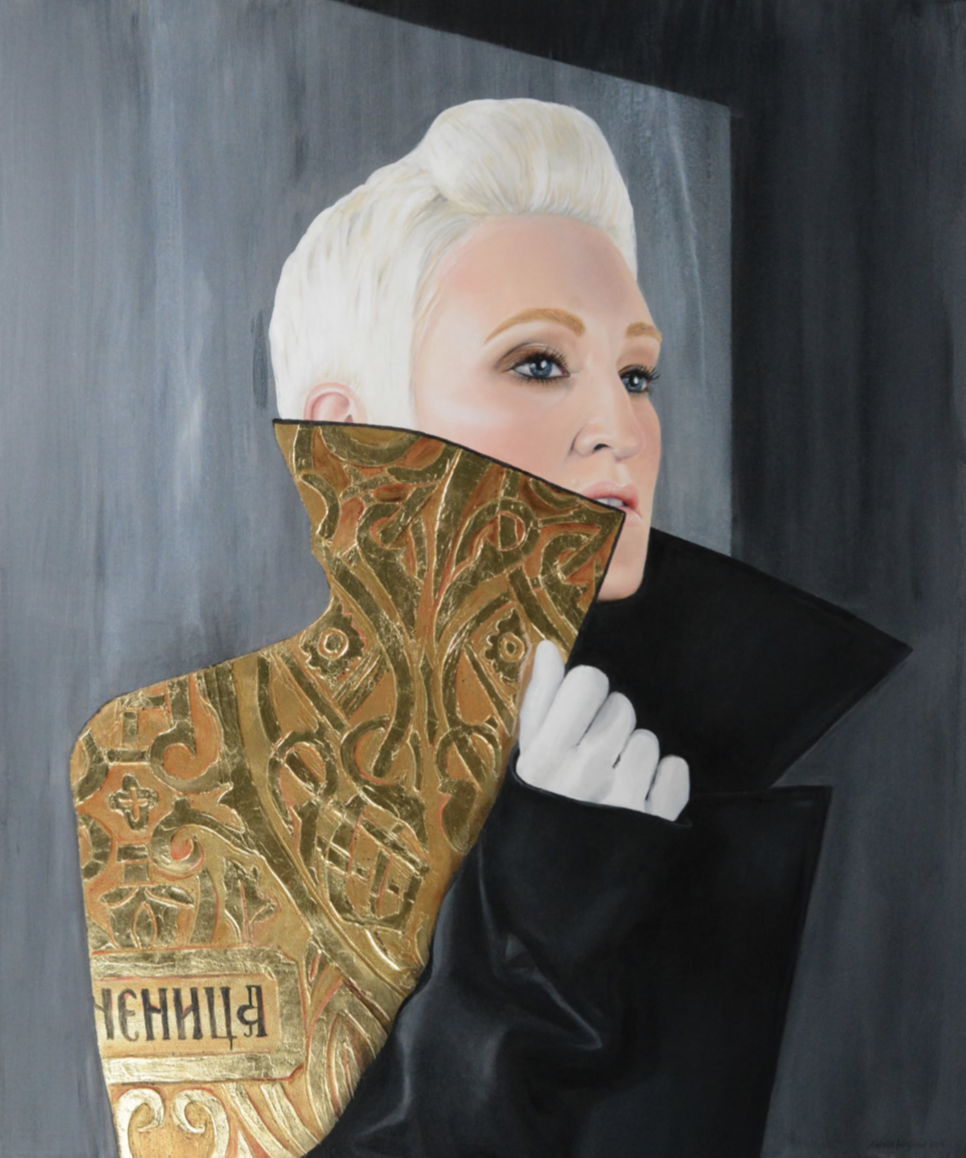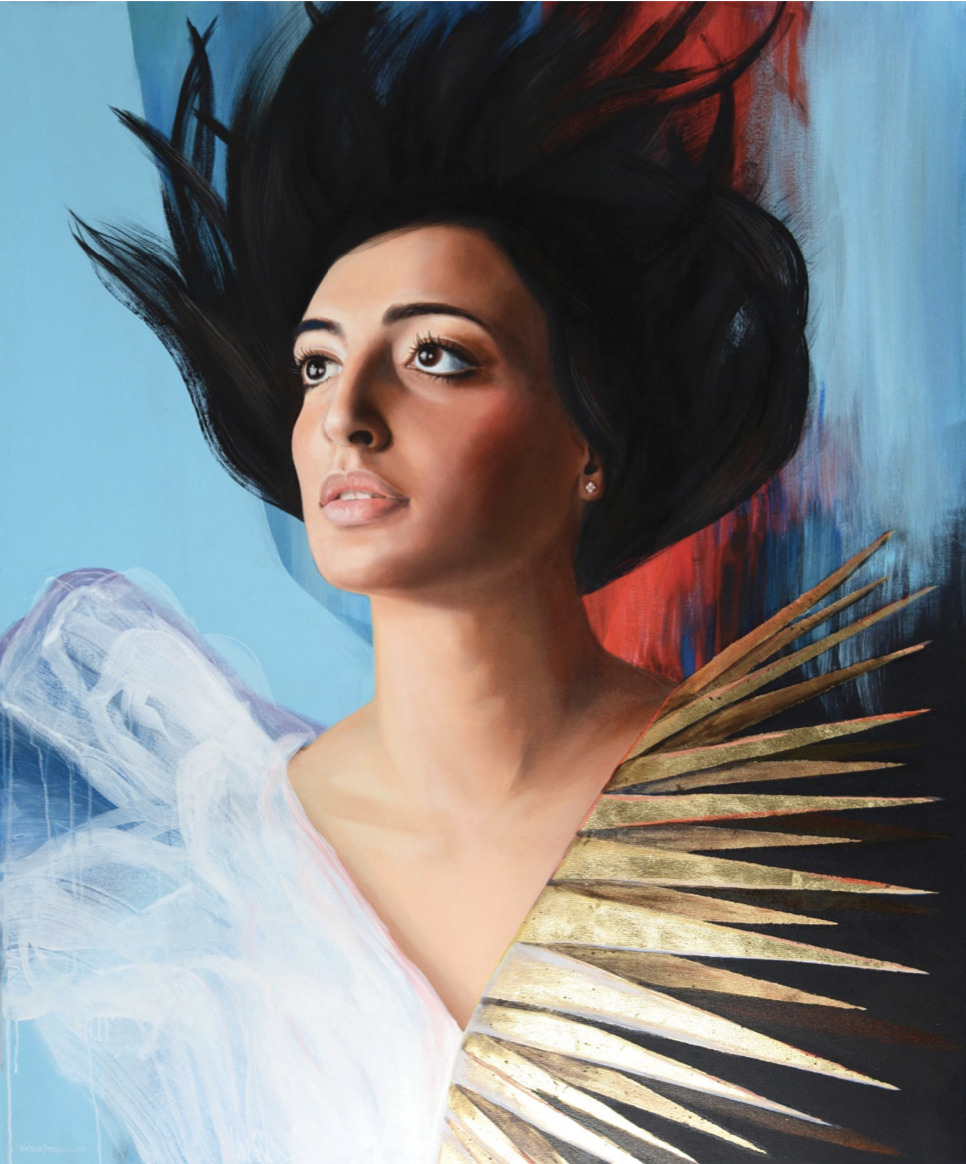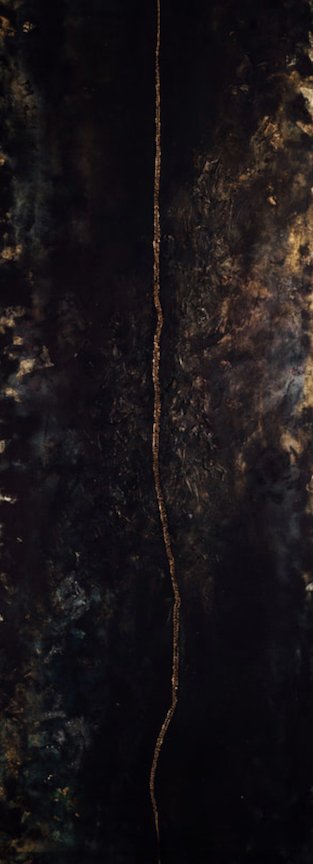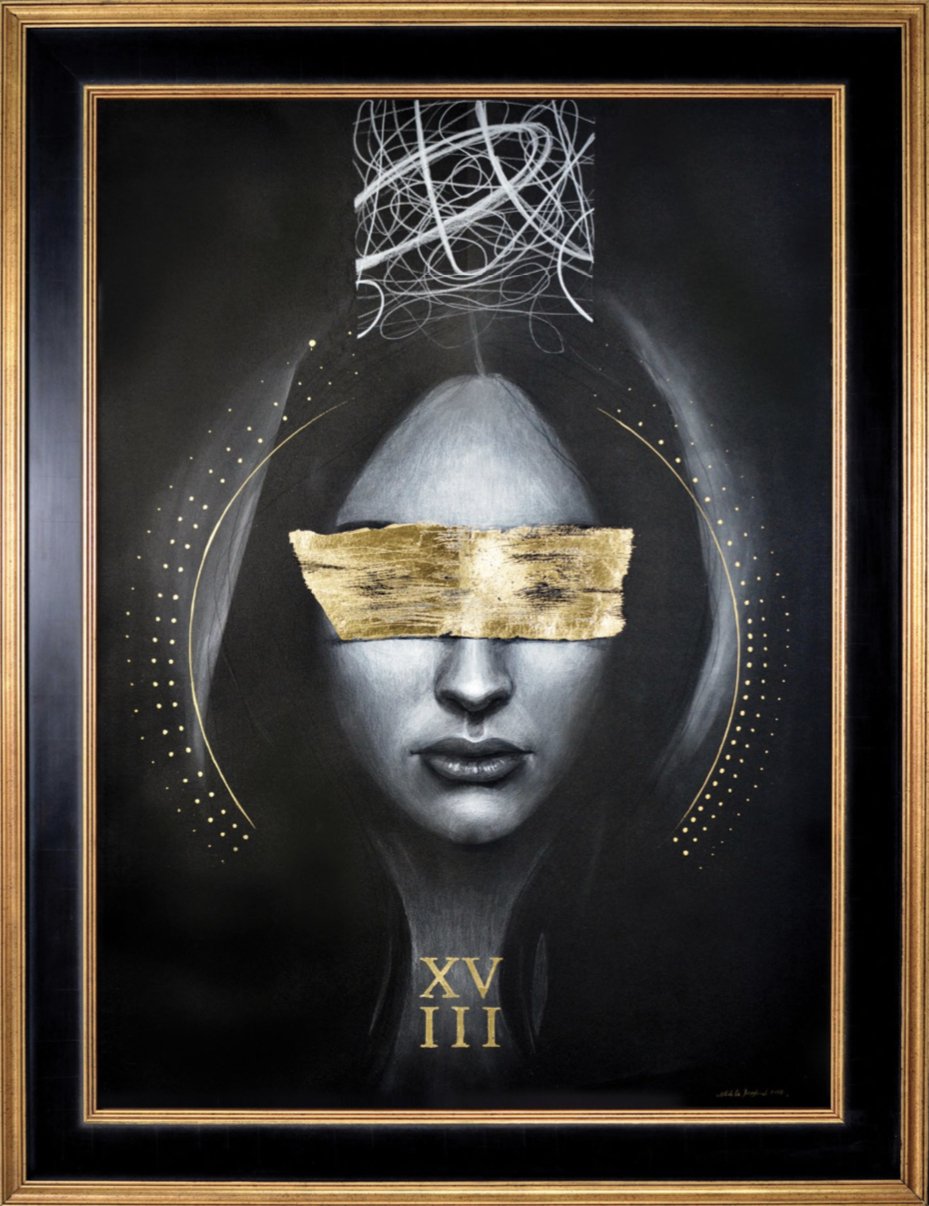There is a natural inclination to idolize and romanticize that which we find most sacred. We create for ourselves a correlation between sacredness and perfection. But reality demonstrates that perfection is not inherent and cannot always be attained or acquired. Idealized Imperfection invites you to explore the duality and tensions beneath what on the surface reads as perfection - perfection believed to come with attainment of ultimate beauty, ease of mind, a pain-free existence - and encourages the questioning of what it is we aspire to realize. Furthermore, we are pushed to address the imperfections around us.
Isolating details of high drama from richly ornate Orthodox iconography, Natalia Berglund combines such elements with another type of icon - women featured in fashion photography. Much like the veneration of visual personifications of Christ, the Virgin Mary, and Saints, many hold reverence for these contemporary perfections of beauty. Not unlike the use of icons to aid in prayer, in contemporary society the flawlessness of the fashion industry encourages something more idyllic, and perhaps unobtainable. Are we overemphasizing the wrong archetypes?
In the paintings by Kelly Kruse, literal imperfections are used to illustrate a story, to remind us of the beauty that can be found after suffering. Through her visual exploration of Christian religious traditions and contemporary illumination, along with the Japanese practice of Kintsugi and the philosophy of Wabi-sabi, paintings that were once complete and whole are subjected to distress. Reminiscent of the suffering Jesus experienced in his passion, canvases are cut, whipped, and then repaired. The beauty appears when the works are once again brought together as a finished whole, enhanced with healed scars. A literal iteration of imperfection exemplified and idealized. We are reminded that there is a duality between time and the reality of pain and as we process, we are able to reach peace in our own personal experiences.
In their individual artistic practices, both Natalia and Kelly have simultaneously pieced together an exploration into the spiritual dimension of human experience. While appearing to be idyllic, contemplation and reflection allows the viewer to witness the limitations in life through this visual dialogue. We are reminded of the fragility of the human body, mind, and spirit, to take guidance from the sacred, and to idealize the imperfect, for there lies our individual truths.
This exhibition is dedicated to the memory of Dr. Shelly Nordtorp-Madson, teacher, mentor, colleague, and friend. No one better exemplified the idea of "idealized imperfection' than her. A realist who could find the wonder and brilliance in all, she taught so many of us to proceed until thwarted, to keep fighting and achieve what you set out to do, while remembering that there is no perfect path and destinations can change. Instead, she encouraged joy in the journey and appreciation of all things shiny and gold. One of the most treasured mentors of my life, Shelly, you were the ideal imperfect human.
Marria Thompson, Department of Art History Gallery Curator
Natalia Berglund
Natalia Berglund is a Minneapolis-based (Minsk-born) multidisciplinary visual artist who works in a variety of mediums, with a primary focus on portraiture. Her latest body of work is inspired by Orthodox iconography and fashion photography. Drawing parallels between the high drama of ancient icons and contemporary representations of women in the media, she explores the tension inherent in modern ideals of femininity. With each piece, Natalia represents her subjects both literally and symbolically. She captures the precise facial features, but then makes surrealistic background and color choices that help create a story filled with meaning and visual richness.
Natalia has participated in numerous gallery and museum exhibitions. Her work can be found in private collections across the United States, Europe, Middle East and Russia. Her piece Vessel is part of the El Paso Museum of History’s permanent collection.
Kelly Kruse
From the inception of her artistic practice, Kelly Kruse has used her work to reflect on longing and suffering. Her work began as a response to her battle with depression. That we suffer implies that we exist in a state of fragility. If we were not vulnerable, we could not suffer. Inspired by illuminated manuscripts, Kelly chose gold leaf as an integral component of her studio practice from the beginning. Besides being an homage to the illuminators of the past, the material’s fragility is attractive to her, nearly as much as its delicacy and luminescence. The foil is irrevocably changed as ink is layered over it. Sometimes it is ruined or tarnished, but it is always transformed. Kelly cannot help but think about the way that God, as described in Exodus 33:20, upon whose face no one can look without dying, veiled himself in fragile flesh to conquer in Glory. And he did this through suffering, through being changed, and he invites us to experience the same. The physicality of the process of incorporating gold leaf into each work has become a sort of extended meditation on fragility, beauty, transformation, and glory, and God’s participation in all of these aspects of human life.
Kelly gravitates towards non-representation because she believes the unseen spiritual world is as real as the physical world. By eliminating objects which she can categorize, the unseen is given a kind of visual presence. She is convinced that the spiritual world is as real as the world we can see, touch, hear, and smell, and to attempt to experience it is vital to our human wholeness. Kelly illuminates to imagine those measureless depths. Making non-representational work also allows her to engage with the wonder of the materials themselves, discovering what they can do and the way that they take up space on a particular surface. The process allows her to draw connections and make meaning with mark, texture, and color.
Kelly believes in the value of connecting faith and art for the modern mind, both as an artist and a beholder of beauty. It is vital to culture to wrestle visually with ideas that are difficult to voice. She also believes it is good for the human soul to grapple with our inherent limitedness, our life’s givenness, and the fact that we are partners for better or worse with the hidden world that sits behind what we can touch.
Shielded Warriors | Natalia Berglund
I have always admired icons as an art form for their stylized representation of people, powerful symbolism, and ornate beauty. For the past few years I’ve been contemplating creating portraits that would somehow incorporate iconic imagery but had not come up with any specific ideas until late fall of 2017. That is when I saw the Russian Sacred Art: Connecting Heaven and Earth exhibition at the Museum of Russian Art in Minneapolis, Minnesota. The icons on display were stunning! I was really moved and inspired by the exhibition. After that, I began to visualize the artworks that I would go on to create. By combining elements derived from the ancient icons and elements inspired by contemporary culture, all while portraying modern-day individuals, I feel that I am creating something interesting and new.
As for the title Shielded Warriors, my warriors are fighting the battle of unifying their identities. With this series, I am exploring how we can rationalize some of the conflicting aspects of our personalities, such as strength and fragility, femininity and masculinity, or deeply caring about certain issues while being blind to others. All of these conflicting identities make us who we are. My goal is to take these conflicting elements and depict them harmoniously as a serene “whole being,” who sees her true self, has come to terms with her identity, and can wear it with pride.
Let the Bones You Have Broken Rejoice | Kelly Kruse
I painted Let the Bones You Have Broken Rejoice in 2017 and 2018 as a visual meditation on human suffering through the lens of the cross. Included in this exhibition is the opening triptych, Even the perfect one dies; he shows us his wounds, which was a sort of thesis painting for the whole exhibit. Following the opening triptych, there were ten stations of human agony, all equated to an episode from Jesus’s passion and death. This exhibition features four of those nine stations. The original exhibition closed with another triptych that imagined the promises made in the prophetic books of the Old Testament about the eradication of suffering.
I was particularly inspired by the Japanese practice of Kintsugi and the philosophy of Wabi-sabi when I made this work. Kintsugi is a practice whereby a broken piece of pottery is repaired using powdered precious metal and adhesive. The cracks on the piece are entirely visible in their newly gilded form, and the piece actually becomes more valuable than before it was broken. Wabi-sabi is an aesthetic philosophy which values the natural, temporal, and ephemeral over the permanent and perfect.
Each painting from this body of work is 64” in length, which is within the range of probable heights for an average male in Palestine in the first century; in other words, it is representative of the height of Jesus of Nazareth. Each panel is the same size; and it is my hope that in this work you will sense a sort of bodily presence.
The process of making this work was a unique experience. I created a painting that felt finished and beautiful, then I inflicted upon the work an act that was like or representative of what Jesus might have experienced in his passion. For example, the
painting dealing with the scourging of Christ and the agony of cruelty and evil was itself scourged with a cat-of-nine tails whip. In another example, the painting meant to express a shadow of the moment of agony when Christ screamed his question, “My God, my God, why have you forsaken me?” was actually removed from the stretcher bars and torn apart.
In the spirit of Kintsugi, I have worked some measure of repair on each of the paintings, though not with the intent that they look the same way they did beforehand. Also in harmony with the philosophy of Wabi-sabi and the messiness of the process of suffering, therefore, you will find many imperfections in these paintings, even though they have been glued, sewn, woven, and gilded. I didn’t make an attempt to hide the wounds, but instead chose to see them as a part of the painting’s history, a reminder of the breaking.
It is important to note that Christ, the God-man, whose death reworked the very fabric of the cosmos, forever changing the material of the universe, chose to keep his scars after his resurrection. So I let these works keep their scars, and my prayer for this work was that it would teach me and those interacting with it that there is freedom and beauty in allowing yourself and others to see your own scars as beautiful, a mark of your healing.

